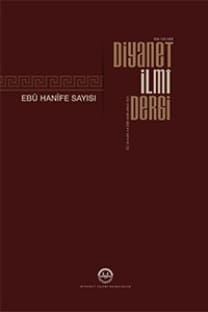FÂRÂBÎ’NİN İLİMLER TASNİFİNİN LATİN DÜNYASINA GEÇİȘİ VE KABULÜ
Bilindiği gibi Fârâbî, ilimler tasnifi ne devraldığı felsefi mirasın etkisiyle olduğu kadar İslam düşüncesinin kendi iç dinamiklerinin de etkisiyle ayrı bir önem vermiş ve ilimler tasnifi için müstakil ve oldukça değerli bir eser yazmıştır: İḥṣâu’l-ulûm. Grek felsefesinin bir devamı olarak, ilimler tasnifi nin Aristo ve Porphyrius’tan intikal eden mirası Fârâbî’de dikkate değer bir değişime uğramıştır. İslam düşüncesinde ardılları tarafından önemli ölçüde benimsenen Fârâbî ilimler tasnifi , XII. yüzyılda İbranice ve Latince olmak üzere Batı dünyasına üç ayrı çeviri ile intikal etmiştir. Dominic Gundissalinus 1140’larda eserin önemli bir kısmını De Scientiis adı altında felsefenin kısımları (De Divisione philosophiae) olarak, Gerard of Cremona ise De Divisione Scientarum adıyla 1175’lerde çevirmiştir. Üçüncü çeviri ise Avendauth (Ebu Davud)’a atfedilmiştir. Bu makalede Fârâbî’den Latin dünyasına intikal eden eserin yukarıda zikredilen ilk iki çeviri yoluyla etkileri üzerinde durulmaktadır. Elverdiği ölçüde Gundisalvi’nin ilimler tasnifi ile de bir karşılaştırma yapılmaktadır
Anahtar Kelimeler:
Fârâbî, İlimler tasnifi , Latin, Gundisalvi
INTRODUCTION OF FÂRÂBÎ’S THE OF FÂRÂBÎ’S THE CLASSIFICATION OF SCIENCES TO LATIN WORLD AND THEİR ACCEPTANCE
Infl uenced by both the ancient philosophical heritage he inherited and the internal dynamics of the Islamic thought, al-Fârâbî attached particular importance to the classifi cation of sciences and wrote an independent and invaluable work on it: İḥṣâʾ al-ʿUlūm (The Enumeration of the Sciences). The Greek tradition of classifi cation of sciences coming down from Aristotle and Porphyry underwent a remarkable change at the hands of al-Fârâbî. Al-Fârâbî’s classifi cation, which was appropriated to a great extent by his successors in the Islamic thought, was made available to the West in the 12th century in three translations, two in Latin and one in Hebrew. Dominicus Gundissalinus, who translated an important portion of the work under the title De scientifi c as divisions of philosophy (De divisione philosophiae) in the 1140s, was followed by Gerard of Cremona, who translated it under the title De divisione scientarum around 1175. Their contemporary translation is ascribed to Avendauth. This paper focuses on the infl uence of al-Fârâbî’s work in the Latin world through the fi rst two translations mentioned above. It also attempts to make a comparison between al-Fârâbî’s classifi cation of sciences and Gundissalinus’ classifi cation
Keywords:
Al-Fârâbî, The Classifi cation of Sciences, Latin, Gundissalinus,
- ISSN: 1300-8498
- Yayın Aralığı: Yılda 4 Sayı
- Başlangıç: 1956
- Yayıncı: -
Sayıdaki Diğer Makaleler
GEÇMİȘTEKİ FÂRÂBÎ’Yİ ANLAMA USULÜ ÇAĞDAȘ FÂRÂBÎ’Yİ YORUMLAMA SORUNU
GÜNÜMÜZE ÖRNEKLİĞİ AÇISINDAN FÂRÂBÎ'NİN VİZYONU
FÂRÂBÎ’NİN TEVHİD ANLAYIȘI VE SIFATLAR MESELESİ FÂRÂBÎ’S
EBÛ NASR EL-FÂRÂBÎ'DE FELSEFÎ ANTROPOLOJİNİN PSİKO-METAFİZİK TEMELLERİ
FÂRÂBÎ’NİN “KİTÂBU ÎSÂGÛCÎ EY EL-MEDHAL” ADLI ESERİ
FÂRÂBÎ’DE HUKUK FELSEFESİNİN TEMELLERİ
